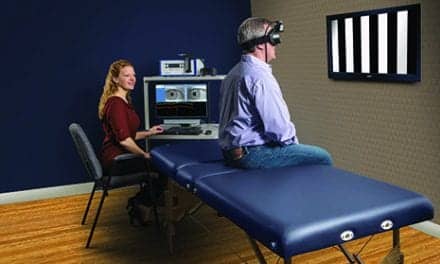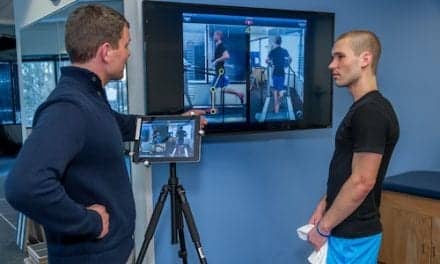Rehabilitation professionals discuss integrated software systems and their impact on practice management
By Cassandra Perez
Physical Therapy Products hosted several rehabilitation professionals for a roundtable discussion about integrated software systems for practice management. Panel members shared their thoughts about features each considered essential for an integrated software system, and exchanged insights about the level of satisfaction their staff members feel toward their current software system. The roundtable participants also detailed how their own clinics’ integrated software systems have helped to improve daily operations, including billing and coding.
The participants for this discussion included: Mike Taylor, PT, MBA, owner of OrthoSport Physical Therapy; Dawn-Marie Ickes, MPT, owner of Evolve Integrative Wellness Physical Therapy and Pilates; and Edward Harding, PTA, co-founder of HD Physical Therapy.
Physical Therapy Products (PTP): When selecting an integrated software system, what features were most important to you? Which manufacturers offered products you considered?
Mike Taylor, PT, MBA: What was most important to me was to find a product that was progressive in its product design and evolution. Also, I needed a product that was in the cloud and that I could access from any place and on all brands of computers, tablets, phones, etc. Lastly, I was looking for a product specifically designed by physical therapists for physical therapists. This was extremely important to me. WebPT fit all of these wants and needs for my company and has been an excellent fit since day one.
Dawn-Marie Ickes, MPT: The first feature I looked for was iPad compatibility and tabletcompatibility. Secondly, marketing and tracking options that interface with auto label list printing features and email contact list tracking features differentiated between referral sources and MDs. Lastly, a final feature was the ease of transition from paper. I looked at WebPT, Clinicient, Practice Fusion, and Practice Perfect EMR + Management Software. I ultimately chose Practice Perfect EMR + Management Software.
Edward Harding, PTA: When selecting our software system, I was looking to improve efficiency in all of the major divisions of my practice, while maintaining compliance and avoiding having to duplicate our work in any way. Together, this would allow us to deliver a higher level of patient care, provide accurate tracking for my PR/Marketing team, and ensure that we honor all of our fiduciary responsibilities to our patients.
PTP: How would you describe your staff’s transition to the integrated software system you currently use, and what level of satisfaction does your staff report in using the system?
Taylor: My staff’s transition to WebPT was embarrassingly fast and easy. I say embarrassing because me being the old man of the group (45 years), it took me 2 days of using the product to get up to speed, while it only took my staff about 2 hours. The learning curve was extremely short. If you can read, you can master this software almost immediately. It was a big sigh of relief for my staff when I finally pulled the trigger and made the transition.
Ickes: The transition to the integrated software system was challenging, as some staff were Mac users while others were PC. There wasn’t an iPad version, so my Mac users struggled a lot. In addition, the PC users had varying degrees of access to tools, which seemed inconsistent and made the usability difficult at times.
Harding: As the culture of our practice is one of everyone wanting to excel, our transition went smoothly. Our minutes per note dropped, allowing our therapists to see the difference immediately; this was extremely motivating. It has also helped expedite our interoffice communication, allowing us to better assign and track tasks, while making it a lot easier to carry out other management responsibilities. All systems have some characteristics that do not work well for certain practices, but with the proper management routines in place, it allows us to appreciate how much more efficient we are operating overall.
PTP: How has your integrated software system affected efficiency and accuracy with billing, coding, and documentation? Has it improved?
Taylor: My company was doing everything by pen and paper, and nothing was integrated at all. The system worked well, but it was only through meticulous auditing and laborious staff intervention. When we brought the new system on board, all of that went away. I lost the need for 1.5 full-time employees, and due to the design of the product, everything is automated and triple-checked before the system allows you to complete an evaluation, note, progress note, or discharge summary. Our efficiency and accuracy are now vastly improved with less work and less worry.
Ickes: We use an outside billing company which has some internal management issues, which I don’t feel is a reflection on the design of the program. Speed is good based on the program, error detection and feedback in inputting errors is nonexistent.
Harding: It has improved our efficiency dramatically by enabling us to avoid duplicating tasks. Unfortunately, there is no system that can meet every single need, so you still must be proficient in each of these areas to truly understand how to use any software to its maximum capabilities. However, by using an integrated system, we are able to stay more compliant with the ever-changing rules of healthcare. Our communication with doctors and other referral sources has also improved dramatically by consistently presenting them with well-formatted, clear, and timely documentation, providing us with more opportunities to better market our brand and establish stronger relationships with these referral sources. The software has also improved our speed and accuracy on determining patient deductibles, co-insurances, and co-payments, avoiding patient balances upon discharge. This greatly improves our patients’ experience. PTP







